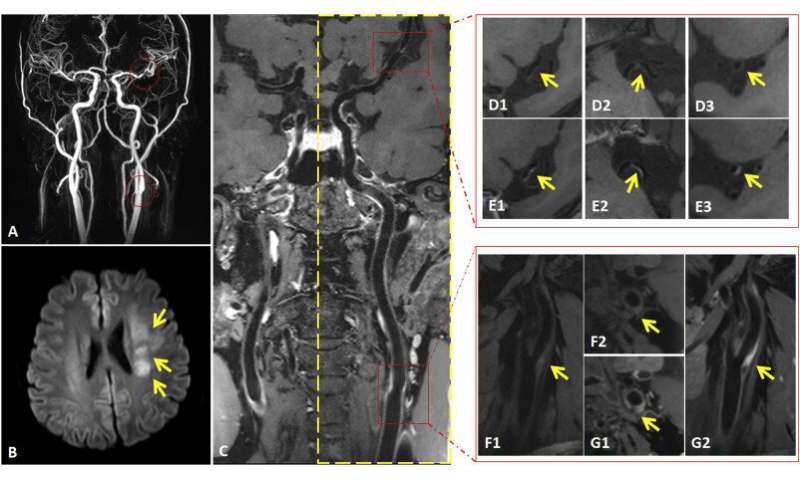
The degree of cerebral infarction (single or multiple infarcts) is a feasible imaging marker to predict future stroke recurrence in patients with ischemic stroke. However, the features of arterial vessel wall lesions and culprit plaques that ultimately lead to different degrees of cerebral infarction still remain unclear.
High-resolution magnetic resonance vessel wall imaging (HR-MRVWI) provides unique advantages in detecting and directly visualizing arterial vessel wall lesions and plaques.
Researchers from the Shenzhen Institutes of Advanced Technology (SIAT) of the Chinese Academy of Sciences developed a head-neck combined HR-MRVWI technique that could potentially provide remarkable suppression of cerebrospinal fluid signals, enhanced T1 (longitudinal relaxation) contrast weighting, and most importantly, the whole-brain and neck spatial coverage.
The study was published in Magnetic Resonance Imaging.
By using the proposed technique, researchers compared the characteristics of culprit plaques among different degrees or types of infarction.
This specific head-neck coverage was capable of depicting arterial vessel wall lesions of multiple vascular beds from common carotid arteries to distal segments of intracranial arteries, achieving comprehensive evaluation of ischemic stroke etiology and recurrence risk.
The experimental results showed that more culprit plaques per patient were found in multiple-infarction group than single-infarction group, as well as in non-perforating artery infarction (PAI) group than PAI group.
For patients with large-artery-atherosclerosis-induced ischemic stroke, those with multiple infarcts had more severe arterial stenosis and more prominent plaque enhancement than those with single infarct.
For patients with anterior-circulation ischemic stroke, those with PAI showed lower arterial stenosis degree than non-PAI.
This work confirmed a positive correlation between stenosis grade/plaque vulnerability and multiple infarcts occurrence.
Source: Read Full Article
